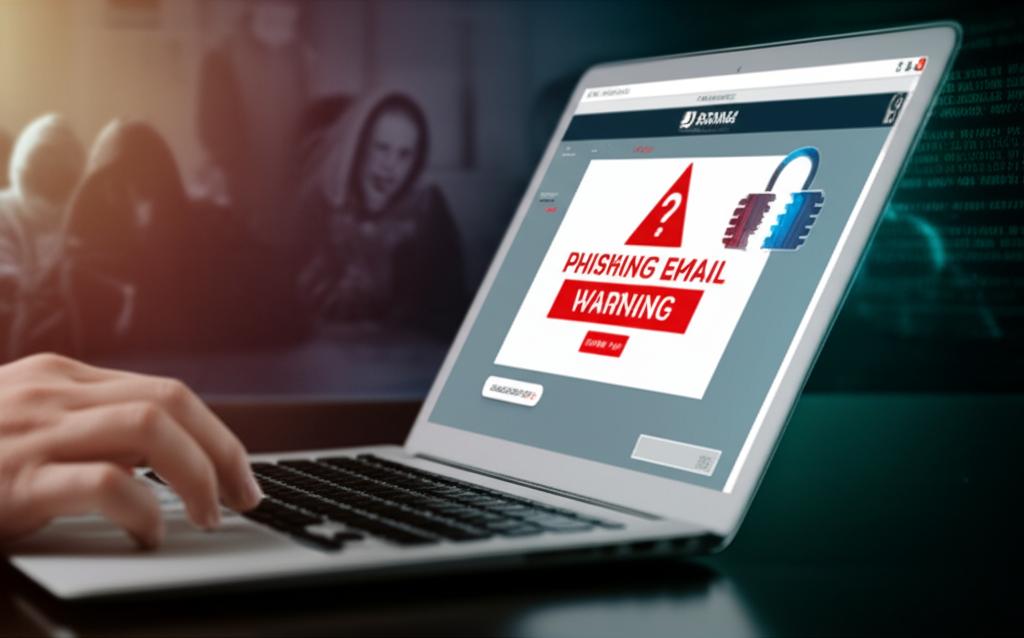Defend Your Inbox: The Dangerous Truth About Phishing Emails
Understanding the Stealthy Threat: What is a Phishing Email?
In our increasingly digital world, the convenience of online communication comes with an ever-present shadow: cyber threats. Among the most prevalent and insidious forms of these threats is the phishing email. Designed to trick unsuspecting individuals into revealing sensitive information, a phishing email can compromise personal data, financial security, and even organizational networks. Understanding what a phishing email is and how to identify one is your first line of defense against these malicious attacks.
What Exactly is a Phishing Email?
A phishing email is a fraudulent attempt to obtain sensitive information—such as usernames, passwords, credit card details, or bank account numbers—by disguising as a trustworthy entity in an electronic communication. These deceptive emails often appear to come from legitimate sources like banks, government agencies, popular social media sites, or reputable companies. The goal is always to trick the recipient into performing an action that compromises their security, usually by clicking a malicious link, downloading an infected attachment, or directly providing personal data.
A phishing email leverages social engineering to exploit human trust, masquerading as a credible source to steal valuable information or deploy malware.
The Anatomy of a Phishing Attack
Phishing attacks typically follow a pattern. A scammer sends out a high volume of deceptive emails. These emails are crafted to create a sense of urgency, fear, or curiosity, prompting the recipient to react without critical thought. For instance, a phishing email might warn of an account suspension, an unauthorized transaction, or a fantastic prize. Once the victim clicks a link, they are often directed to a fake website that looks identical to a legitimate one, designed solely to harvest their credentials.
Common Tactics Used in Phishing Emails
While the core objective remains the same, attackers use various sophisticated techniques:
- Spear Phishing: Highly targeted attacks, where the attacker has some prior knowledge about the victim (e.g., name, job title, company) to make the email more convincing.
- Whaling: A form of spear phishing specifically aimed at high-profile targets like senior executives, often impersonating a superior or an urgent business matter.
- Smishing (SMS Phishing): Phishing attempts delivered via text messages, often containing malicious links or requests for callbacks to fraudulent numbers.
- Vishing (Voice Phishing): Using voice communication (phone calls) to trick victims into revealing sensitive information, often pretending to be tech support or a bank representative.
- Clone Phishing: A legitimate, previously delivered email is copied and altered to include a malicious link or attachment, then sent from a spoofed email address.
Spotting the Red Flags: How to Identify a Phishing Email
Vigilance is key. Here are critical indicators that an email might be a phishing email:
- Suspicious Sender Address: Check the email address carefully. It might look similar to a legitimate one but have subtle misspellings or an unusual domain.
- Urgent or Threatening Language: Phrases like “Your account will be suspended,” “Immediate action required,” or “Unauthorized login detected” are common tactics to induce panic.
- Generic Greetings: If an email from your “bank” addresses you as “Dear Customer” instead of your name, be wary.
- Malicious Links & Attachments: Hover over any links (without clicking!) to see the actual URL. If it doesn’t match the expected domain, it’s likely malicious. Never open unexpected attachments.
- Poor Grammar & Spelling: Professional organizations rarely send emails riddled with grammatical errors or typos.
- Requests for Personal Information: Legitimate companies will never ask for your password, social security number, or full credit card details via email.
Fortifying Your Defenses: Preventing Phishing Scams
Proactive measures are essential to protect yourself and your data from a phishing email attack:
- Verify the Sender: If an email seems suspicious, contact the organization directly using a known, legitimate phone number or website (not one provided in the email).
- Think Before You Click: Always assume links are dangerous until proven otherwise. Hovering over them reveals the true destination.
- Never Open Suspicious Attachments: Files like .exe, .zip, or documents from unknown senders are high-risk.
- Use Strong, Unique Passwords and 2FA: A strong password combined with two-factor authentication (2FA) adds a crucial layer of security.
- Keep Software Updated: Ensure your operating system, web browser, and antivirus software are always up-to-date to patch known vulnerabilities.
- Report Phishing Emails: Most email providers have a feature to report phishing. This helps them identify and block future malicious emails.
The Critical Impact of Phishing Emails
The consequences of falling victim to a phishing email can be severe, ranging from financial loss and identity theft for individuals to significant data breaches, reputational damage, and operational disruption for businesses. The digital footprint left by stolen credentials can lead to further compromises, making it imperative to be perpetually cautious.
Stay Vigilant Against Phishing Emails
Phishing attacks are constantly evolving, becoming more sophisticated and harder to detect. By staying informed about what a phishing email is, recognizing its common characteristics, and adopting robust security practices, you can significantly reduce your risk of becoming a victim. Your inbox is your digital gateway; defend it fiercely.







